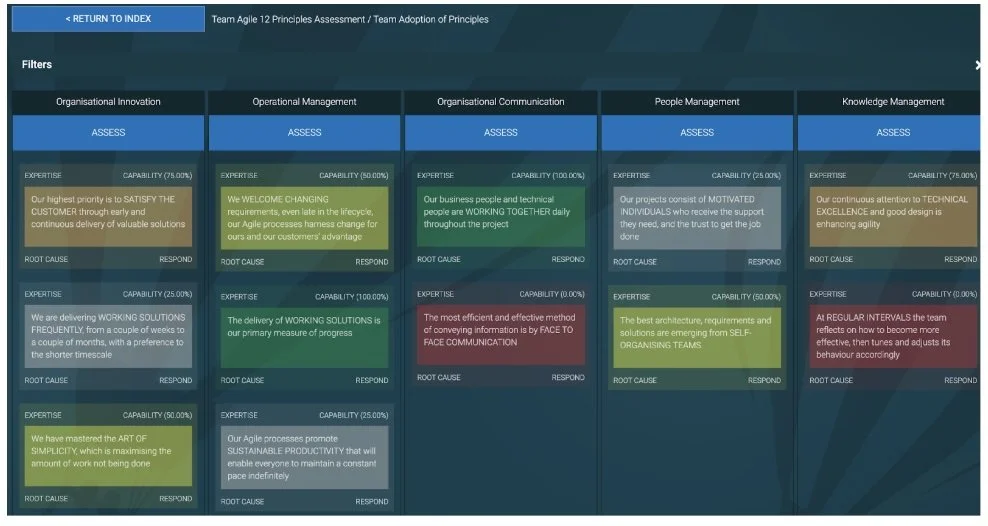Getting the Knowledge
Enterprise content management systems (CMS) enable users to create, manage, and modify digital content like websites, apps, and documents, without needing extensive technical coding knowledge. However, unless their information-sharing abilities align with their user expectation, their adoption will be slow. It’s critical that those responsible for the design, development, testing, and eventual deployment and support of such systems gain access to the right expertise to be efficient in its operationalisation. When the expertise is efficiently acquired the enterprise sees material value from its CMS investment early.
In this article, I discuss how the open source movement has inspired the concept of an Open Story™ An Open Story is a requirement that describes the implementation of a specific feature of a software solution. For example, the implementation of a CMS feature, e.g. user access, content upload or revision control workflow. However, for this innovative approach to work the system integrators' requirements author must relinquish copyright claims; making the requirement details available to others for the sole purpose of reducing their implementation costs and the promotion (socializing) of implementation best practices. Furthermore, for this crowd-sourcing approach to be effective, the large technology providers, e.g. Alfresco, Documentum or OpenText, need to play an active role in the capture, validation and promotion of such SDLC requirements. For those providers that do, there is a greater chance their solutions will become more attractive to the under-served small and medium sized client based. This attractiveness is a direct result of the reduction in the system integrator costs.
Promoting the Open Story™ Movement - John Abram
Today, the lack of requirement socialising ensures implementation costs remain high because the large system integrators retain a monopoly on this lucrative work. Only they have the possibility to benefit from economies of scale as they develop their own internal community of knowledge to keep internal costs down.
In response to the continued high costs associated with these types of implementations, which can easily be applied to CRM, HRM and other enterprise-wide solutions, such vendors need to ensure that the project design, implementation (i.e., content migration and capture, lifecycle management and publication) and commissioning of each project contributes to a cycle of constant improvement, to deliver fast solutions to project challenges and a smooth deployment and user enablement (creation, configuration and training).
Reducing Total Cost of Ownership
The benefits of an effective CMS implementation are as important for the customer as they are for the vendor: When the customer is able to realise both the commercial and operational benefits of their investment quickly, the CMS vendor gains a competitive advantage, claiming lean project implementations, more predictable implementations and reduced total cost of ownership. The opportunity to leverage past implementation experience will further reduce any associated risks. These risks can be further reduced if each Open Story is embellished with additional information such as the required technical expertise, upper and lower implementation time estimates and test scripts.
Encouraging the Adoption of Agile Ways of Working
Combining the adoption of an open story methodology with the adoption of Agile ways of working may prove to be an unrivalled combination for CMS implementation. Agile ways of working, which calls for the adoption of an iterative and incremental approach, enables the implementation teams to optimise their feature roadmap, confident that they have the opportunity to make incremental adjustments as they progress, as they discover unique implementation scenarios as they work with the repository of Open Stories.
As the image above illustrates, the creation, access and repurposing of large collections of open stories can be used to produce predefined implementation roadmaps. Providing a turn-key approach to the effective implementation of the CMS. Furthermore, should each of the open stories be allocated a relative implementation estimate (points), it would be possible to recalibrate these recommended implementation estimates once the initial iterations have been completed to better represent the capabilities of an individual team.
Extending the Socialising of Expertise
Once the CMS vendor has provided a platform for the distribution of a growing series of Open Stories, why not consider extending it to include governance and implementation efficiency capabilities?
In the image above, we see a digitised Agile Principles benchmark assessment, which enables the CMS team to quickly assess how well they have understood and applied the 12 Agile principles, which lay the foundation for Agile adoption. Guiding cross-discipline teams adapting to change, delivering value to customers, fostering collaboration and promoting continuous improvement.
Provisioning a series of open stories connected to each of the assessment questions that describe performance improvement measures, also as Open Stories, provides the system integrator with access to a holistic operational knowledge management system. This strategy enables the entire CMS community of vendors, system integrators and clients to go well beyond storing information, but creating a comprehensive knowledge management capability.
www.evaluationcentre.com
Copyright Monetical Ltd 2011



